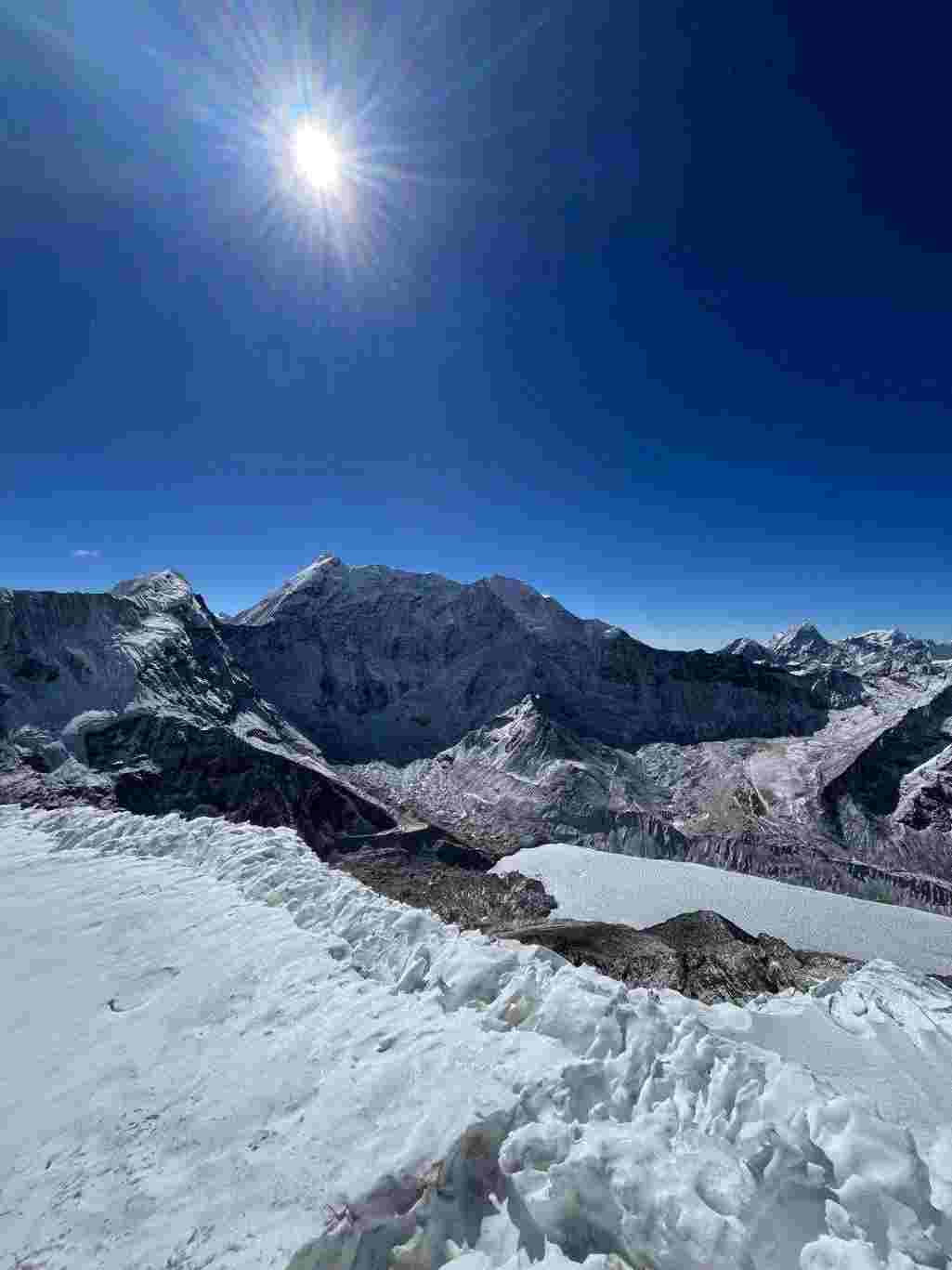


Island Peak Climbing: A thrilling Himalayan adventure offering breathtaking views and a taste of mountaineering for beginners.
Island Peak, or Imja Tse, is one of Nepal’s most popular trekking peaks, standing tall at 6,189 meters (20,305 feet) in the Everest region. It’s a perfect mix of trekking and mountaineering, ideal for adventurers looking to take their first steps into high-altitude climbing. Let’s explore what makes Island Peak climbing so exciting.
Island Peak got its name in 1953 when the British expedition team, including Tenzing Norgay Sherpa, spotted it from Dingboche village and thought it resembled an island in a sea of ice. Interestingly, this peak was used as a training ground for climbers preparing for the first successful ascent of Mount Everest. Today, it’s a favorite for climbers seeking both challenge and breathtaking views.
Here’s why Island Peak is such a draw for adventurers:
Beginner-Friendly Mountaineering: No prior climbing experience is needed; just good fitness and determination.
Unbeatable Views: From the summit, you’ll see Everest, Lhotse, Makalu, and Ama Dablam towering above the Himalayan landscape.
A Taste of Real Climbing: You’ll learn to use crampons, ropes, and ice axes while navigating glaciers and steep ascents.
Combine with Trekking: Many climbers pair Island Peak with the Everest Base Camp trek for an epic adventure.
The journey starts with trekking through Sherpa villages like Namche Bazaar and Dingboche, acclimatizing along the way. Once at Island Peak Base Camp, climbers prepare for the summit push.
The Route: From base camp, you’ll cross glaciers, navigate crevasses, and climb a steep headwall using fixed ropes. The final stretch is along a narrow ridge leading to the summit.
Summit Day: Expect a long day—about 10–12 hours of climbing and descending. The effort is rewarded with panoramic views that will leave you speechless.
Island Peak isn’t easy—it requires physical fitness and mental toughness:
Altitude: You’ll climb to over 6,000 meters, so proper acclimatization is key.
Technical Sections: Using climbing gear like crampons and ropes can be tricky but manageable with guidance.
Cold Weather: Temperatures can drop below freezing, especially at night or near the summit.
Train Ahead: Build stamina with hiking or running and practice uphill climbs with weights to simulate carrying gear.
Learn Basic Skills: Familiarize yourself with mountaineering equipment like crampons and ice axes before your trip.
Pack Smart: Warm layers, sturdy boots, gloves, and sunglasses are essential for comfort and safety.
Acclimatize Properly: Take rest days during your trek to avoid altitude sickness.
Hire a Guide: Experienced Sherpas ensure safety while teaching you climbing techniques.
The ideal seasons are spring (March-May) and autumn (September-November) when weather conditions are stable and skies are clear.
Island Peak climbing offers more than just an adrenaline rush—it’s an opportunity to experience the grandeur of the Himalayas while pushing your limits. Whether you’re a first-time climber or an experienced trekker looking for something new, this adventure will leave you with memories that last forever.
